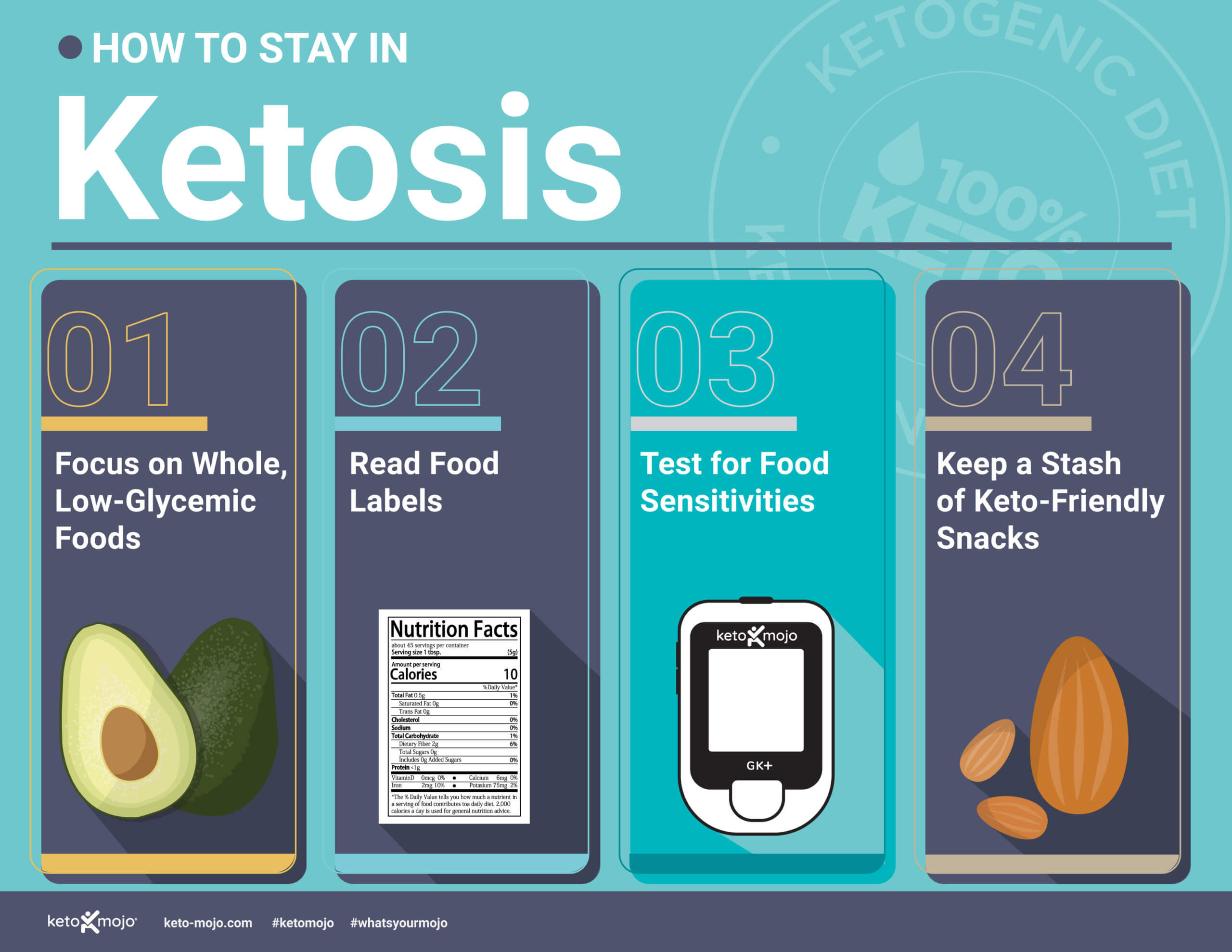UPDATED BY FRANZISKA SPRITZLER, RD, CDCES
Once you get into ketosis, your next goal is to stay there. Beginning a new diet is difficult as your body takes time to adjust, so making the transition as straightforward as possible is important for success. Fortunately, there are some strategies that can help. Here, we share practices that help keep your blood ketones up and your blood sugar levels and carb intake down. Turn them into habits, and before you know it, the keto lifestyle will be second nature.
Focus on Whole, Low-Glycemic Foods
To maintain ketosis, it’s important to stay mindful of everything you eat, from the groceries you buy to the ingredients you cook with. Choosing low-glycemic, keto-friendly options helps support long-term success. While preparing your own meals and snacks gives you the most control, it’s just as important to choose wisely when picking up pre-made items. Being selective about what you bring home makes it much easier to stay on track.
As the ketogenic diet grows in popularity, more brands are labeling their products “keto-friendly” to appeal to the keto crowd. But don’t be misled by the marketing. Many of these so-called keto products still contain more carbs, sugar, or sweeteners than you’d expect. Always check the label before you buy.
In fact, sugar in its various forms is so integral to our foods that it is even included in products you wouldn’t think to contain troublesome ingredients, like precooked meats, tomato sauce, and yogurt. For this reason, we recommend consuming mainly nutrient-dense keto foods, including protein, fats, and low-carb veggies. By only keeping ingredients and foods that are keto-friendly in your home, you reduce risk factors that may tempt you away from keto or accidentally pull you out of ketosis.
Looking for inspiration to plan tasty low-carb meals? Explore our delicious keto recipes that can help you stay on track.

Read Food Labels
Foods and drinks labeled “keto” may seem like great options. But if you look at their ingredient list, you’ll often find they too contain problem ingredients (i.e., carbs/sugars) that can cause your ketone levels to drop.
Food that you may not expect to contain sugar or other high-carb ingredients include some broths, spices, condiments, chewing gums, mints, and even sugar alternatives. These products can sneak unexpected carbs into your diet and impact ketosis.
Fortunately, packaged foods come with nutrition labels that provide key information. So always read them and factor in any carbs as part of your daily macro tracking. You can learn how to identify keto-friendly foods here. Once you’re familiar with which ingredients to look for and which ones to avoid, it’s helpful to keep a running list of go-to keto-approved options. That way, when you’re in a rush or need a quick snack, you’ll already know what fits your diet – no second-guessing required.
Test for Food Sensitivities
Here’s the tricky part about identifying keto-friendly foods: nutrition labels don’t always tell the whole story. Because everyone’s metabolism is different, foods and drinks that work for others may spike your blood sugar or knock you out of ketosis, especially if you’re sensitive to certain ingredients. This is known as bioindividuality, and it’s why testing your body’s response to specific foods is so important, particularly when you’re getting started. Learn more about biondividuality and how to test for food sensitivities here.
Keep a Stash of Keto-Friendly Snacks
One of the biggest obstacles to staying in ketosis is veering off track, and that’s much more likely to happen if you don’t have keto-friendly foods on hand when hunger strikes. Keeping keto snacks at home not only reduces the temptation to reach for carb-heavy foods but also curbs early cravings that can arise when transitioning to a ketogenic lifestyle. If a full pantry makeover isn’t possible, even a small stash of keto-approved options can go a long way in preventing slip-ups. It’s also smart to bring snacks with you when you’re on the go, such as nuts or no-sugar jerky, so you’re not caught without a keto-friendly choice. Check out the rest of the foods on our recommended snacks list.
Take Home Message
No matter your reason for following a keto diet – whether it’s for weight loss, blood sugar control, or managing a health condition like type 2 diabetes or epilepsy – the key to staying in ketosis is consistently keeping your carb intake low and paying close attention to food ingredients. Reading nutrition labels helps you avoid hidden sugars and high-carb surprises.
Finally, it’s important to consult a physician, dietitian, or nutritionist before making dramatic dietary changes.
Need some keto recipes to help you craft meal plans that ensure your daily carbs stay in check on your high-fat diet? Find killer keto recipes here.


